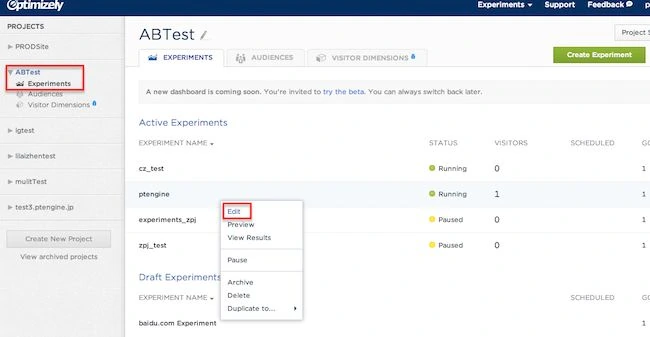Converts, satisfies ad expectations, presents relevant and concise messaging, and connects with target personas are attributes that describe a good landing page experience.
Why?
The clue comes from the final word in the sentence above: “experience.”
A landing page experience equals user experience.
Google Ads describes it this way,
“Your landing page experience refers to the quality of the experience that a customer has while they are on your website.”
If your page doesn’t demonstrate these several key touchstones, it will not help you with lead generation.
With that goal in mind, here are the attributes needed to provide an optimal user experience, how you can check for landing page effectiveness, and the results of a landing page with a poor user experience.
To easily move between sections, check out our helpful table of contents.
How can I improve my page experience?
- Create a page that converts
- Satisfy ad expectation
- Present relevant and concise messaging
- Connects with target personas
How do I check my landing page experience?
Why is my landing page experience below average?
How can I improve my page experience?
1. Create a page that converts
As we touched on above, conversion is not just a part of a landing page experience; it is the main reason you build an ad landing page for a marketing campaign.
The average landing page conversion rate is around 2.35% across various industries, but the top 25% are converting at 5.31% or higher. (The ideal landing page would fall into that 24%.)
To reach this conversion rate, you’ll need to focus on several key areas during creation and optimization.
- Content
Does the content reflect your company’s branding and collateral? It is clear and engaging? Do you provide too much or too little information about your offer?
- Design
Can you match the design to other web pages or ads your business has made? Did you remove the navigation to cut down on distractions? Is the form properly built and easy to use?
The sections below on ad alignment and A/B testing will also provide direction in building a better landing page.
Check out our post here for a more in-depth look at how to produce a healthy high-converting landing page.
2. Satisfy ad expectation
Your landing page and ad should align to provide any page visitor with a memorable and unified experience. What does this look like?
Purposefully implementing similar keywords and copy. Familiar copy communicates to the page visitor that they are in the right place and encourages them to convert.
You should also implement consistent visual branding.
Ad and landing page visuals should not be different in obvious ways. Your page visitor or lead will not be expecting this, and it might be confusing and off-putting.
Try to align font, styles, and visual elements from your ads and landing page. These should also match your business or company’s visual branding.
Finally, deliver on your ad offer. This may seem like a given, but if your ad details certain pricing, that pricing should be included on your landing page.
In other words, if your ad promises a free demo and your landing page only includes a purchase— you might need to rethink your ad or landing page.
Bottom line: Ad and landing page expectation alignment will engender the trust and connection necessary for a positive landing page experience.
As an added benefit, aligning your landing page with your ads can seriously boost your Google Ads Quality Score. A higher score can mean higher ranking and lower ad spend.
3. Present relevant and concise messaging
While there are many approaches to creating landing page messaging, there are at least two aspects you must nail—relevance and conciseness.
Make sure your page is relevant in several ways.
It’s relevant to your audience, industry, and company offerings.
Does the content reflect the knowledge of the people reading them? We’re not saying you should fill your copy with jargon, but you should communicate a level of expertise and transparency.
In terms of conciseness, here are some practices to keep in mind for your conversion-driven, user-friendly landing page.
- Keep your page around 500 words.
- Remove most navigation to other pages.
- Make sure your headings are minimal and straightforward.
- Include a simple form that captures essential information.
- Always provide direct CTAs.
Keeping to relevance, conciseness, and clear CTAS will boost the overall effectiveness of your landing page.
4. Connect with target personas
This final way to improve landing page UX is where the buyer journey kicks in. Your landing page should be designed for a specific buyer persona.
Your intended persona should have been decided earlier in your campaign. Its details should be in every aspect of your campaign goals, including ad design, placement, and copy.
At New North, we recommend reading Hubspot’s Buyer Persona questions, the Storybrand framework, and the Empathy Map to help you craft you target persona.
Essentially, these are scripted questions or narrative formats that help you to identify pain points and will help you craft the best persona for your campaign and landing page.
Your page needs to speak directly to their pain points or concerns and then present them with your solution. This can be followed up with features, benefits, and testimonials and end with a personalized CTA.
How do I check my landing page experience?
Checking your landing page experience can be an involved process, but there are two solid practices to employ to track and improve the experience.
User behavior analysis and A/B testing!
User behavior refers to what the visitors to your landing page are doing once they get there.
Why is tracking this page engagement important?
It allows you to collect data that can be leveraged to improve your landing page experience.
We suggest using tools like HotJar. This software tracks user behavior like a heat signature.

You should also A/B test different aspects of your landing page.
Basically, this testing compares two versions of a web page to see which one performs better.
Tools like UnBounce, Optimizely and Visual Website Optimizer (VWO) to assist you in testing your landing page.

Why is a landing page experience below average?
Because you are not meeting user experience expectations. We recommend you give the steps we outlined before a try.
The results of a bad landing page experience only add insult to injury here. Without careful planning and even more cautious creating, a subpar landing page can cost you and your business in some painful ways.
- low conversion rates
- higher ad costs
- decreased ROI
- fewer
Ultimately, a below-average landing can ruin any campaign. How to avoid the costs listed above?
Careful research and planning or consider consulting an expert.
Ready to improve landing page experience?
Finding the best landing attributes can be difficult and implementing those attributes into your own pages can be even more so.
But don’t worry. That’s why we’re here. At New North, we’ve created hundreds of successful, user-friendly, and high-converting landing pages.
If you’re interested in improving your landing page experience, reach out.
We want to help improve your conversion rates and lead generation strategies and help position your business for even more growth.






